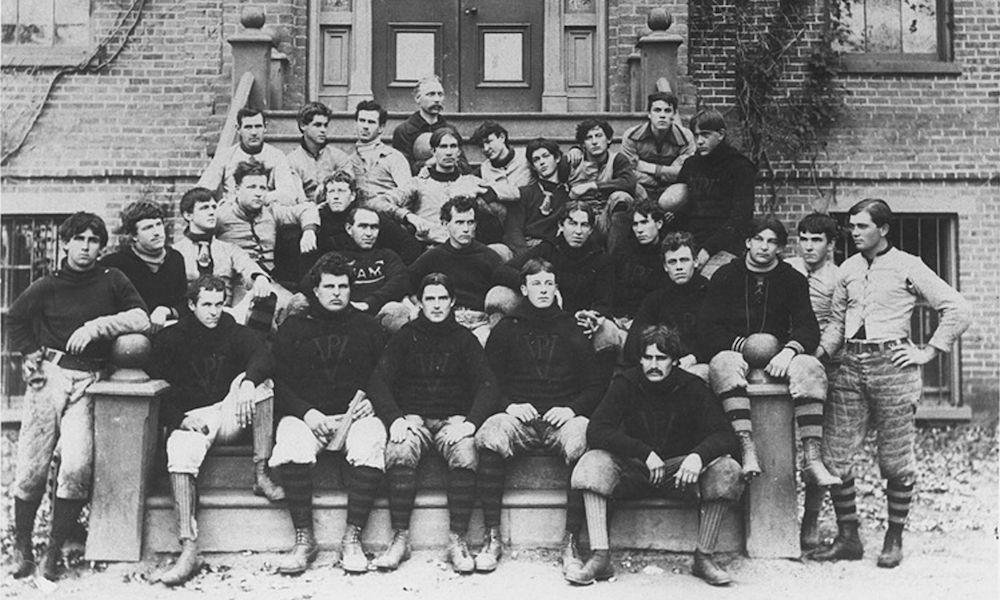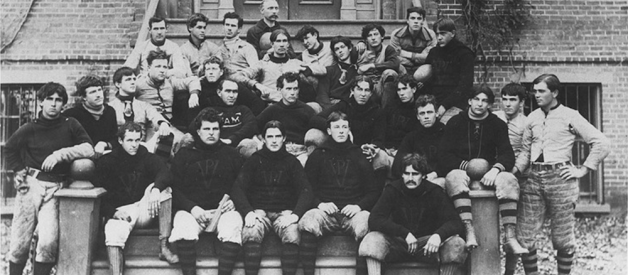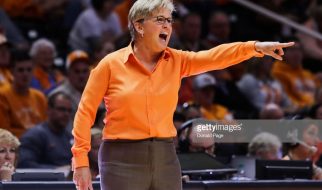 By Virginia Tech ? http://spec.lib.vt.edu/imagebase/05vtathletics/screen/043FB200410271322.jpg, Public Domain, https://commons.wikimedia.org/w/index.php?curid=4364450
By Virginia Tech ? http://spec.lib.vt.edu/imagebase/05vtathletics/screen/043FB200410271322.jpg, Public Domain, https://commons.wikimedia.org/w/index.php?curid=4364450
Vol social media has been ramping up in anticipation for the Battle at Bristol and ACC opponent Virginia Tech. But many people are asking the same question:
What the heck is a Hokie?
Orange & White Report has the answers.
The origin of the Hokie is debated even by Virginia Tech fans, but there?s an interesting story to dig out of the lore. Back in 1896, a Virginia Polytechnic Institute cadet named OM Stull won a cheer-creation contest with the following linguistic mystery:
Hoki, Hoki, Hoki, Hy!Tech, Tech, VPISol-a-rex, Sol-a-rahPoly Tech Vir-gin-iaRay rah VPITeam! Team! Team!
An -e was eventually added to Hoki, and so Hokies became the nickname of the team. Some sources state that ?hokie? was a colloquial name for a turkey, otherwise known as a ?hokie-bird?. Other sources dispute that, as Stull claimed there was no real meaning behind the word ? he just thought it sounded good.
Things start getting really interesting when, in 1908, the name ?Gobblers? was adopted by the football team ? and again there are multiple versions of the story. One story claims that the cadets would yell another linguistic mystery at the team ? ?Coni-a-ah!? ? and the team would respond by making a turkey gobbling sound. Another story relates that after VPI had beaten UNC on a Thanksgiving Day game, the cadets returned to campus boasting about how their team ?took the turkey.? The final tradition reports that the ?gobblers? was a reference to the football team?s mealtime behavior. Regardless, the Hokie-turkey myth was solidifying. They were called the ?Gobblers? for the first time in print in 1909, and the name stuck.
Then in 1913, an enterprising fellow named Floyd ?Hard Times? Meade began taking a live turkey to the games. I say he was enterprising because he actually trained that turkey to pull a two-wheeled cart up and down the field ?with him in the cart. The turkey could also flap his wings and gobble on cue. In the era of the Jumbotron, that may not sound all that impressive but in 1913 it was awesome. The VPI President (unfortunately) put a ban on the two-wheeled cart, saying that he thought it was cruel to the poor turkey. Regardless, the live turkey tradition continued until 1962, and was beloved by the students. In fact, when the VMI bulldog attacked their turkey on the sidelines during a game, the bleachers emptied as the cadets rushed to their mascot?s defense.
In 1962, the first costumed mascot appeared. The Gobbler had real turkey feathers dyed to match the school colors, and the man behind the head thought it a ?thing of beauty?. Subsequent wearers were inclined to disagree, as apparently the costume soaked up water like a sponge, becoming so heavy it was difficult to move.
In the 1970?s, however, the Gobblers began to dislike their nickname. A coach began to push for using ?Hokies? instead, apparently not wanting any mascot to reflect his players? eating habits. In 1982 the turkey mascot was changed to the current Hokie-bird mascot, which doesn?t really look like any bird living. That?s when Gobblers vanished and Hokies took over.
You can find out more at hokiesports.com ? and if you do check that out, you?ll be treated to an amazing and correspondingly hilarious history of the hokie. That?s the long answer.
The short answer is that Hokies are turkeys.
The dictionary definition of Hokie takes us a little bit further:
hokie [hoh-kee] noun ? an emasculated turkey
So grab your turkey calls, Vol Nation, as you head out the door for Bristol. Be sure you hit concessions, because turkey legs are always on the menu at Bristol Motor Speedway. And while Virginia Tech fans are among the nicest and most entertaining in college football, there?s something about the image of Vol Nation waving turkey legs and using turkey calls during College Gameday that just won?t go away.
Let?s get to Bristol, where we can give thanks that roasted turkey will be literally everywhere ? especially on the field.


